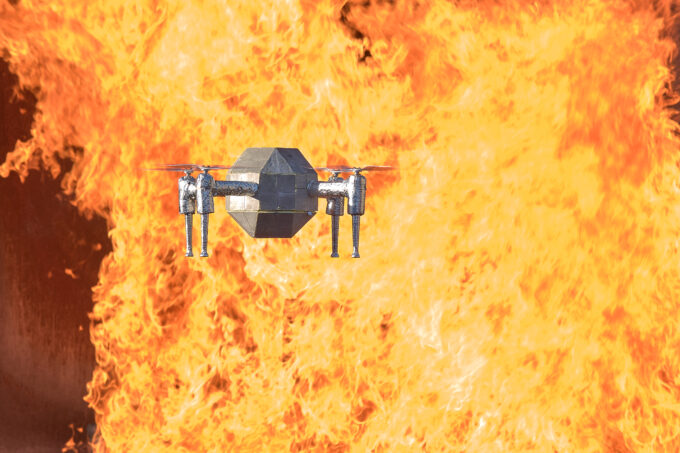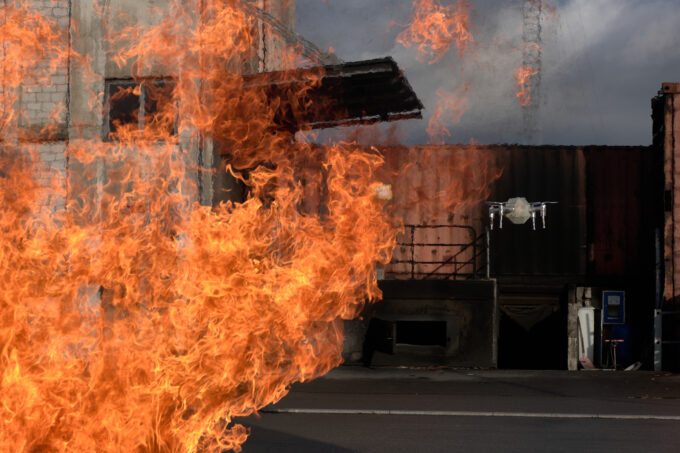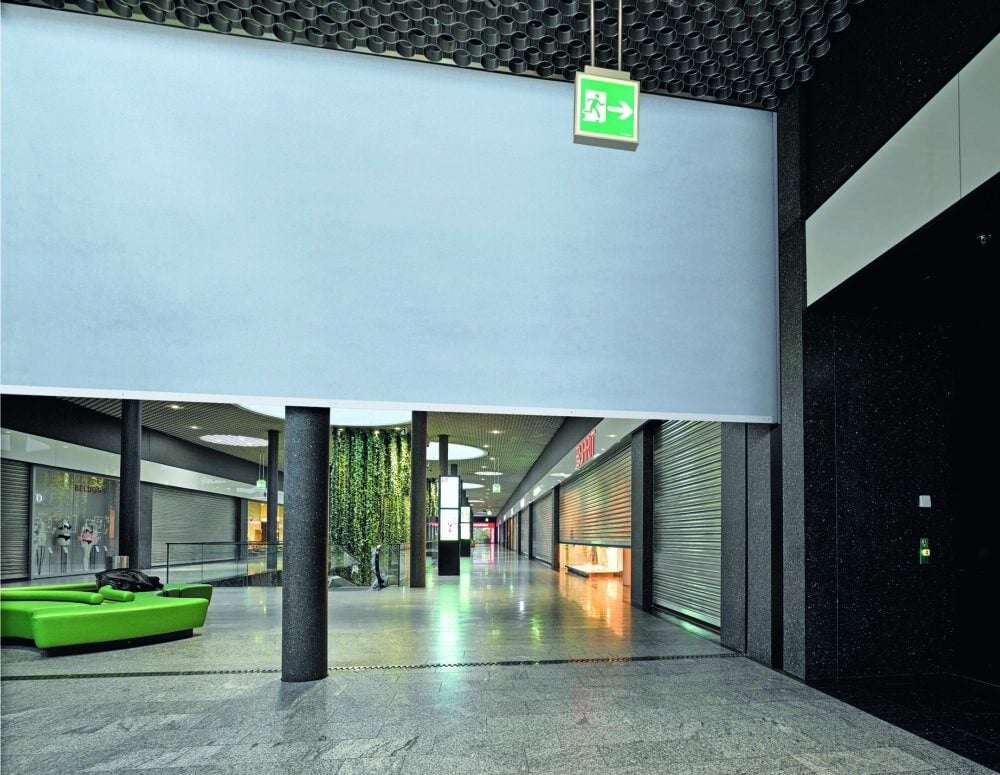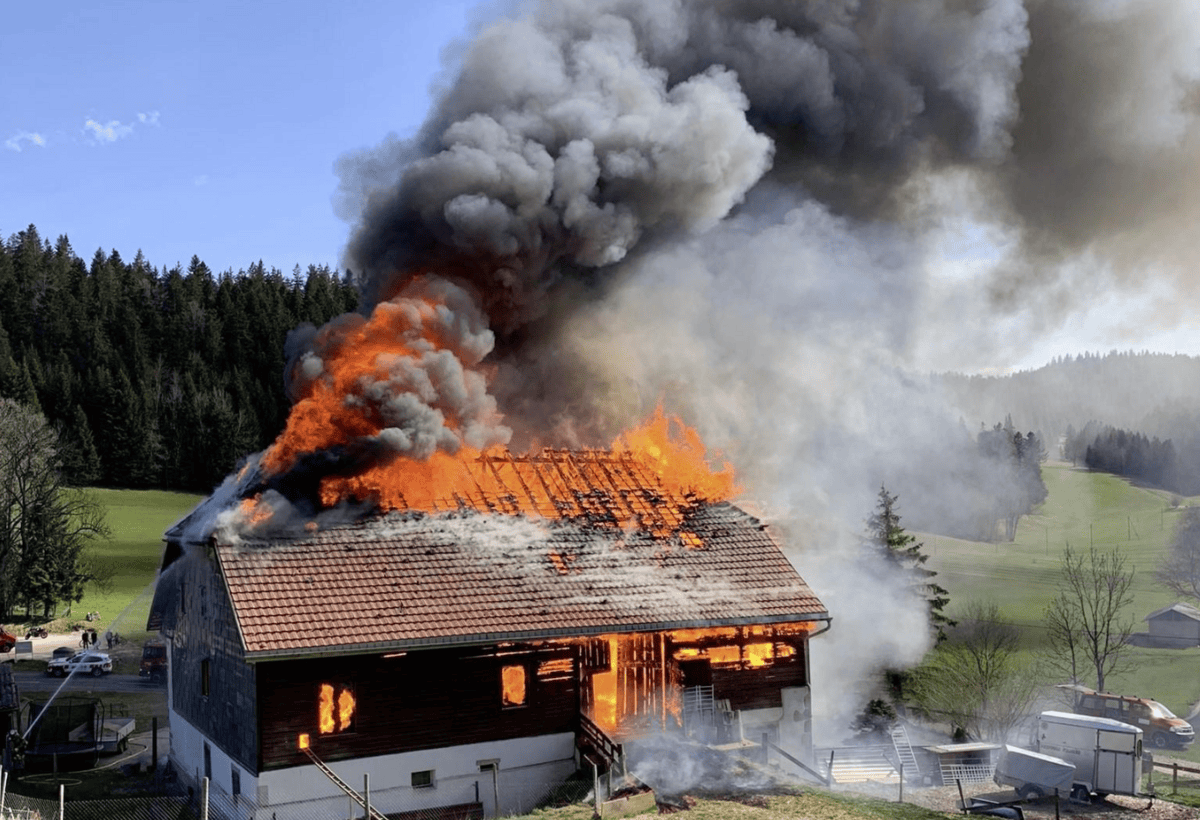Heat resistant drone for fire fighting
Researchers at Empa and Imperial College London are developing a heat-resistant drone that can analyze the source of a building or forest fire at close range. This enables firefighters to optimize the strategy of a high-risk operation before they enter the danger zone.

Where others run out, they have to run in: firefighters put themselves in dangerous situations during rescue operations - sometimes in the middle of a sea of flames. Last year, Swiss fire departments were called out to fight more than 12,000 fires. Since temperatures in a burning building can reach lethal levels of around 1,000 degrees Celsius, it is essential to avoid any unnecessary risk. Flying robots could support such missions: Researchers from Empa and "Imperial College London" are currently developing a heat-resistant drone that can provide initial data from the hot spot. Based on this information, the men and women of the response team can optimize their strategy before venturing into the inferno. "Before they go directly into the danger zone, the firefighters naturally don't know what exactly awaits them and what difficulties they will encounter," says Mirko Kovac, head of Empa's Sustainability Robotics Laboratory and the Aerial Robotics Lab at Imperial College London. Here, for example, drones equipped with cameras and CO2 (carbon dioxide) sensors could provide important information about the distribution of fire sources, unexpected hazards or trapped people.
Too hot for normal drones
Drones are already being used to fight fires, taking aerial photos, lifting fire hoses onto skyscrapers or dropping extinguishing agents in remote areas, for example to contain the spread of forest fires - but only at a safe distance from the source of the fire. "To fly closer, the extreme heat generated by a fire is too great for conventional drones," says David Häusermann of Empa's "Sustainability Robotics" lab. Close to the fire, the frame melts and the electronics give up. "More than aerial photos of the fire site from a safe distance are not possible with commercially available drones," Häusermann says. The robotics researcher's goal was therefore to develop a drone that could withstand the heat and thus deliver data quickly and accurately from the center of the hot spot.
Ultralight and tough
Häusermann worked with firefighters to determine the requirements of a drone in a fire and set out to find a material that could protect the heart of the drone - the motors, batteries, sensors and electronics. He found what he was looking for with colleagues from Empa's Building Energy Materials and Components Laboratory: the researchers led by Shanyu Zhao and Wim Malfait were able to synthesize an insulating material that can withstand high temperatures and thus make the drone more fire-resistant. The researchers drew their inspiration for the design of the "FireDrone" from nature, or more precisely from animals such as penguins, arctic foxes and spitting beetles, which live in extreme temperatures. All of these animals have corresponding layers of fat, fur or produce their own body's own protective layers of thermoregulating material that enable them to survive under extreme conditions.
Suitable for spacesuits
The material in question is an aerogel, an ultralight material consisting almost entirely of air-filled pores enclosed in a hint of polymer substance. In this case, the materials researchers chose an aerogel based on a polyimide plastic. Polyimide aerogels are also being researched by NASA for applications such as space suit insulation. However, Shanyu Zhao did not rely on polyimide alone to synthesize the aerogel: the composite material consists of polyimide and silica and is also reinforced with glass fibers. "Laboratory analyses have shown that this comparatively fire-resistant material is particularly well suited for use in drones," says aerogel researcher Zhao.
In initial tests at Empa's flight arena in Dübendorf, the prototype of the "FireDrone" already performed well. The flight characteristics and controllability of the drone, which is about 50 centimeters tall, were excellent even with an aerogel insulation jacket and an additional built-in cooling system, as well as aluminum cladding to reflect heat. The design, which the researchers just published in the journal "Advanced Intelligent Systems," was convincing in this "dry run."
But whether the aircraft would also pass the test of fire had to be demonstrated by tests under conditions that were as real as possible and typical of a fire mission. The Empa team was able to use such a "real-life scenario" on the training grounds of the Andelfingen training center. While Stefan Keller, training coordinator for the fire department of the Canton of Zurich's building insurance, and the training center's logistics crew lit a gas fire in an oversized metal bowl, the drone pilots steered their equipment right into the inferno.
The result: The "FireDrone" prototype survived several test flights. Drone researcher Häusermann is satisfied with the results: "Even after several flights, the electronics, the thermal imaging camera and the CO2-sensors of the "FireDrone" undamaged and ready for further testing." A next step would now be to test the "FireDrone" in a fire that, unlike the comparatively clean gas flame, shows a strong soot development.
Firefighting expert Stefan Keller is impressed by the results: "If a drone makes the first reconnaissance of the situation, we don't have to send the firefighters into the danger zone immediately. For us, this progress is enormously interesting".
The "FireDrone" could also be used in extremely cold environments, such as in polar regions and on glaciers. The team has also tested the drone in a glacier tunnel in Switzerland to study how the system behaves in very cold temperatures. Discussions are already underway with potential industry partners to further develop the prototype. "The use of drones is often limited by environmental factors such as extreme temperatures," said Mirko Kovac. "With the "FireDrone", we are showing a way to significantly expand the future range of applications for drones in extreme environments."
Further information about the "FireDrone" can be found at this Video.










